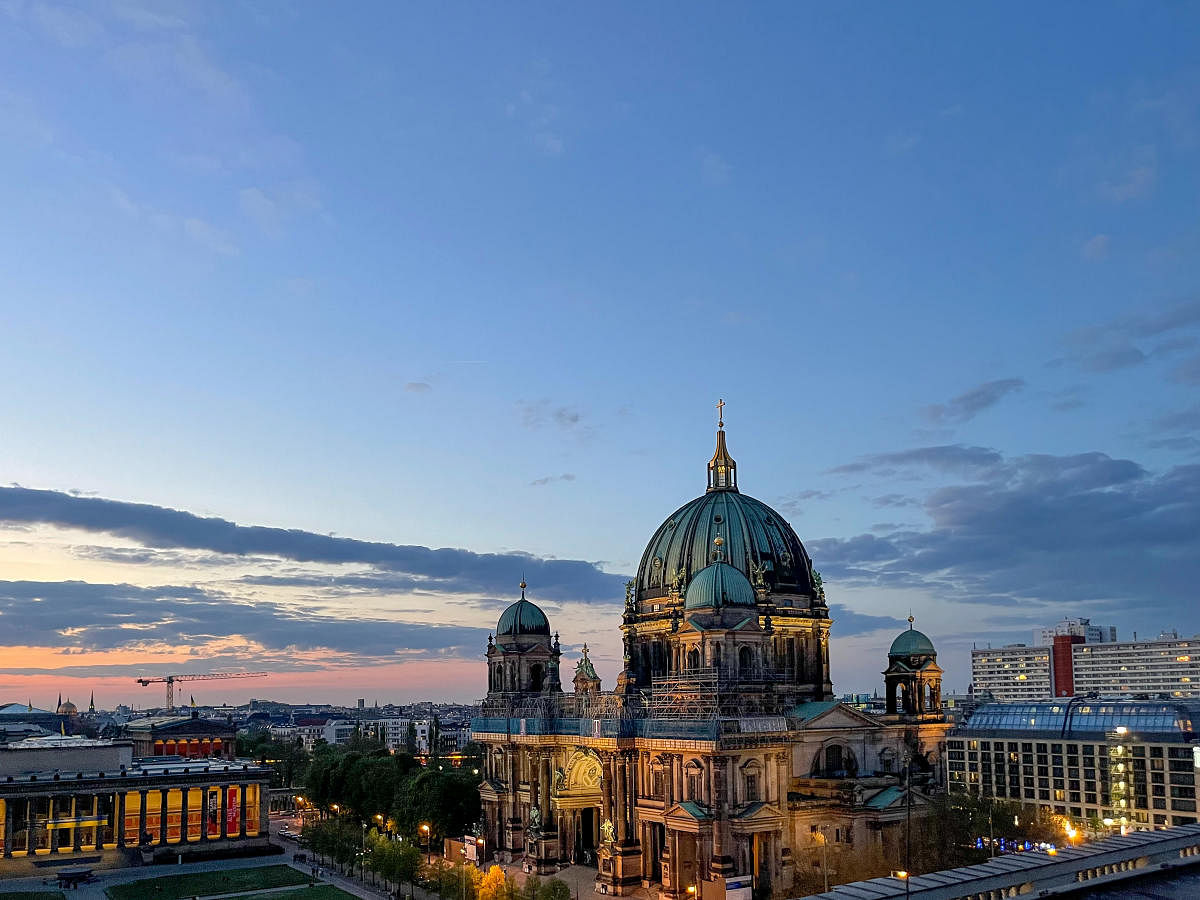

Each time I visit Berlin, I recognise anew how much like an onion this city is. Peel back a layer and there’s another waiting underneath. Clichéd as it may sound, a hop-on, hop-off bus tour is a good way to get a striking overview of this always-in-transition capital city, that lives at full throttle. A few minutes into the bus ride, it becomes apparent that the place has a vibrant smorgasbord of cultural offerings. Everywhere the eye spies a museum, a monument, a mausoleum.
A commentary, that establishes how the city emerged from being divided in two, bombed and finally reunited to become a vibrant centre in Europe, is what fits the historic structures we pass into a larger story fabric. Brandenburg Gate, the Reichstag building, Checkpoint Charlie, the Holocaust Memorial to European Jews, Cathedrals and City halls, Palaces, and churches.
The last few decades have seen the city rewrite its history and become defined as much by its easy-going spirit, as by cultural experimentation. The Museum Island which features on the UNESCO World Heritage List is home to a knot of museums — all showcasing superlative art, artefacts, architecture, and sculptural offerings.
What moves me is that cultural institutions in Berlin are not static, but rather free-thinking and pushing boundaries on what museums can be. The newly-opened Humboldt Forum, home to a comprehensive collection of art and artefacts from the 19th and 20th centuries, offers a new way of interpreting colonial art. It elaborates on the origin of the artefacts, focuses on interpretations from the culture in which the object originated and invites diverse reading. Opera and theatrical acts are similarly forward reaching. The Berliner Philharmonie, since its inception in 1963, has stayed a pivot in the world music scene, with its edgy stage design and programming. A spirit of exchange and debate has meant the city has no shortage of visiting
and experimental offerings. Currently, sweeping hearts is French Circus company, Cirque Le Roux’s experimental stage play, Elephant in The Room — a retro circus comedy. Drawing on their circus training and using acrobatics to further storytelling, their aim is to create original worlds with personal significance.
The buzz of vibrant energy
Ideas may begin in these temples of culture, but eventually, spill onto the streets. Neighbourhoods like Kreuzberg, the former punk quarter that experienced a revival, exemplify this spirit. Punctuated with murals, dotted with sculptures, and peppered with small-scale eateries, cafés, and cultural venues, there is a constant buzz. Acting as a microcosm of the larger city, it’s clear that here’s a place that takes its writers and artists seriously. I remember visiting in 2019, the 200th birth anniversary of novelist Theodore Fontane, a key representative of literary realism in Germany. Heading into the Kunstlerhaus Bethanien, now an international cultural centre, I was roused by the enthusiasm displayed by a travelling horde, who came to pay homage to the writer, by visiting the apothecary in which he had worked as an assistant in 1848. In cities that experience rapid cultural change, I appreciate institutions that have held on despite the whims and caprices of a changing time. Clarchens Ballroom is one of the last of its kind, a remnant of Berlin of the 1900s. Its reputation precedes it as the filming location for movies like Inglourious Basterds, and an assortment of news reports, documentaries, and concerts. The Spiegelsaal or dance hall, with its high baroque ceilings and chandeliers, has borne witness to two world wars, the division of the city and the gentrification of the neighbourhood. Signing up for a dance session or having a meal in the courtyard, is a good way to experience the place.
Another metaphor for the city is the Arminius Market. Opened in 1891, damaged in the Second World War, rebuilt in the 50’s, refurbished in the ’90s. Now a protected building, the structure is a haiku of elaborate archway, floral design in cast iron on the pillars, and Gothic-style bay windows. In this cathedral-like structure, the sole object of worship is all permutations of local and international cuisine. Think beer from small Berlin breweries, the freshest of seafood, regional specialities from nearby Austria, all odes to the small-scale. To appreciate Berlin, one needs to develop a bi-focal vision. The past beckons as strongly as the present. In 2019 it was exhibitions surrounding Bauhaus, the most influential architectural movement of the 20th century that received an unselfconscious kiss of life. I remember wandering around the city, admiring preserved homes that validated form follows function, appreciating the idea that the individual and material environment should be rid of all that’s inessential. Now in 2022, it’s the dialogical Humboldt Foundation, that looks reflexively at unleashed acquisition during a period of colonisation, which has me voting with my feet. For those with a cultural appetite, there’ll always be a thought-provoking reason to visit Berlin.